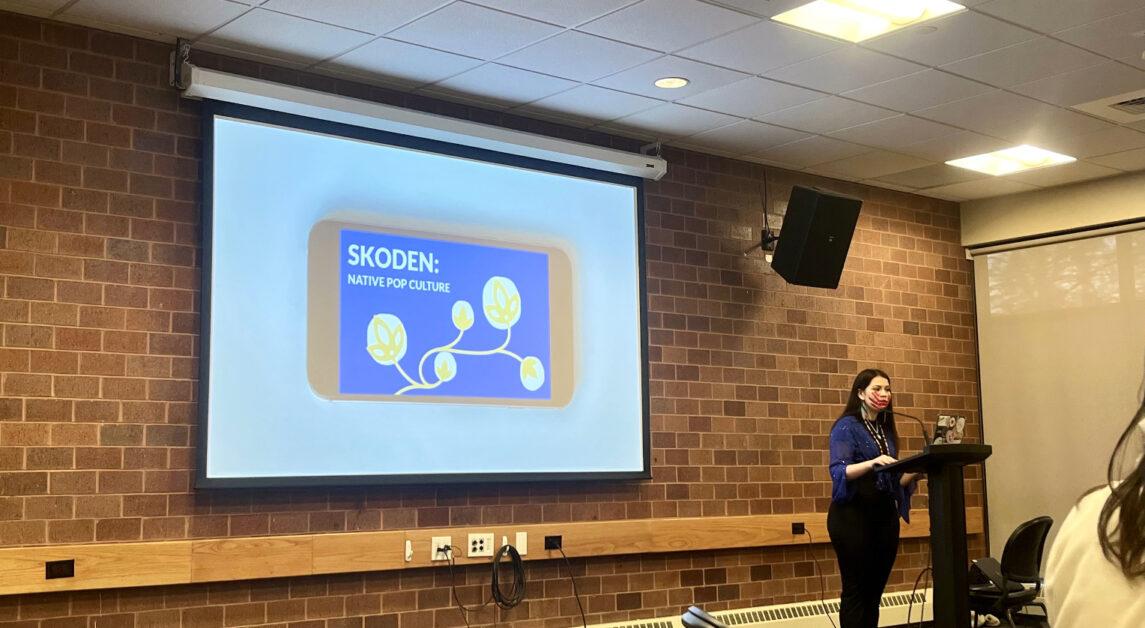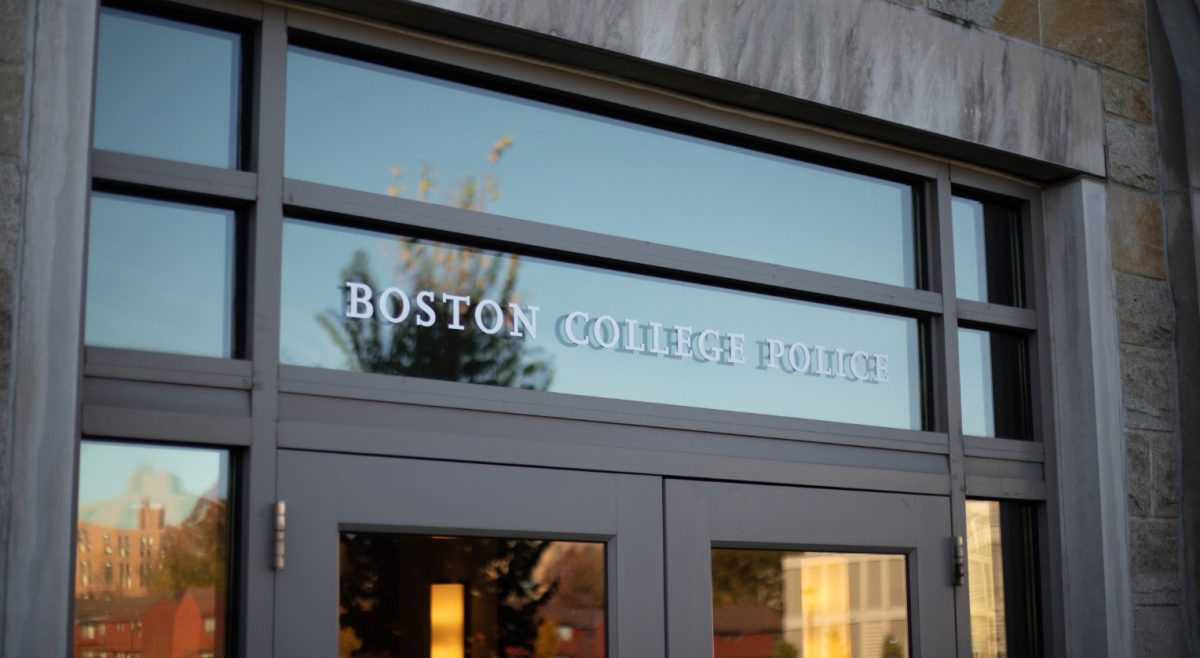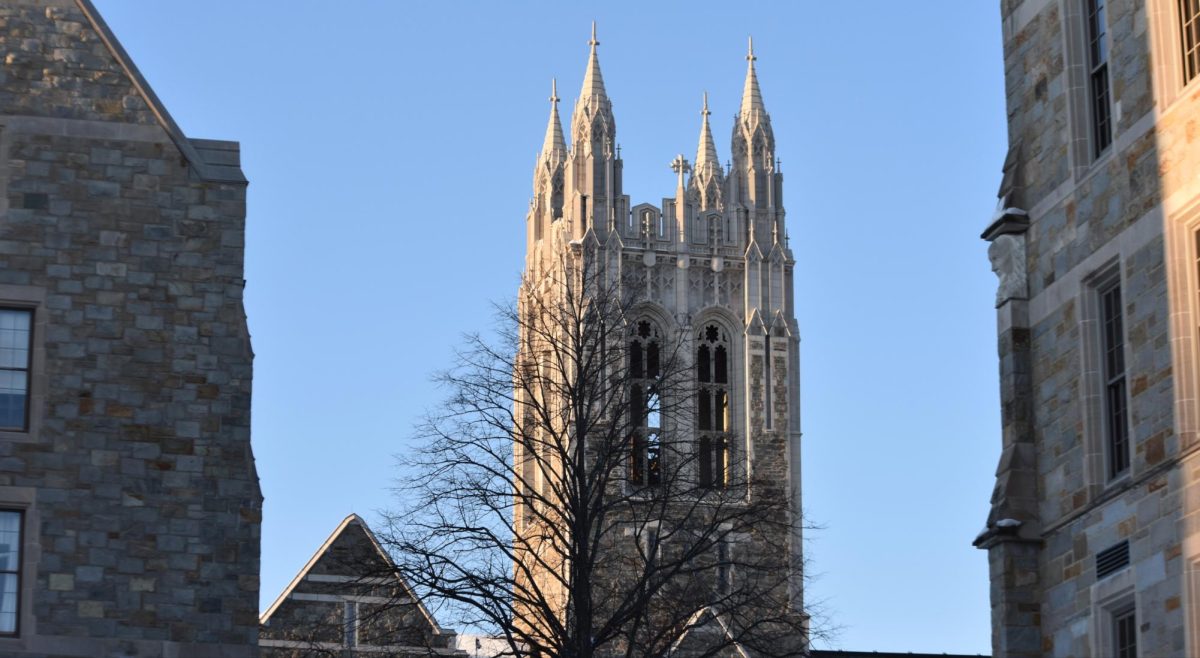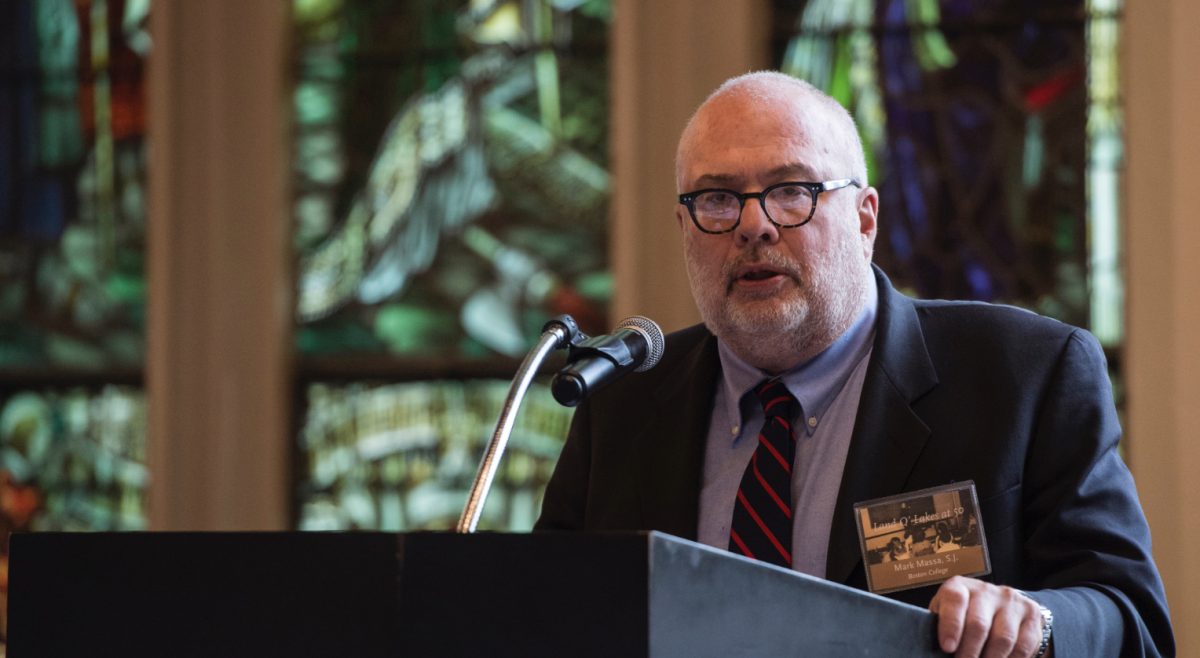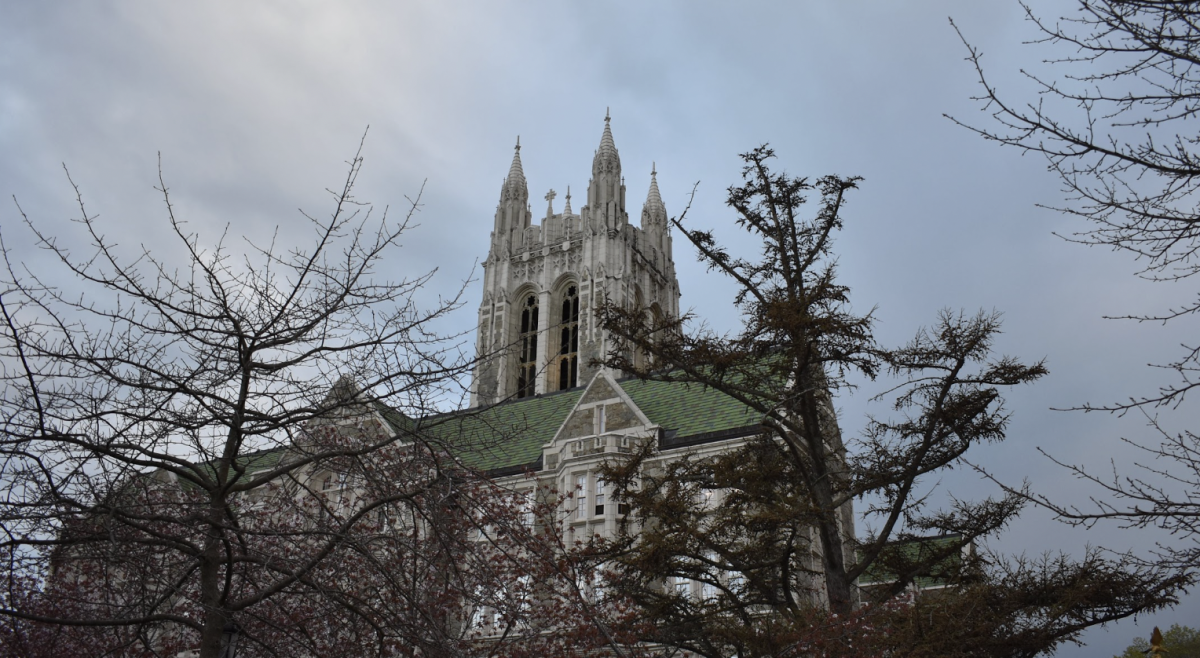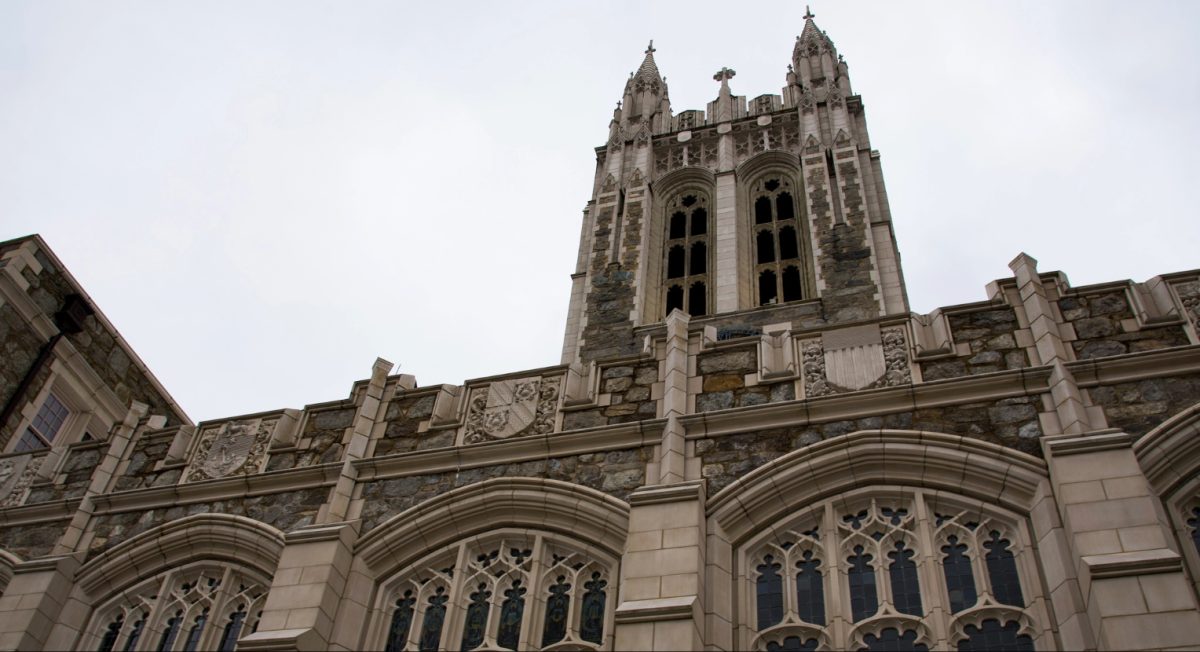Gabriella Mendoza stood before the crowd at the Native American Heritage Month opening ceremony, wearing a painted red hand over her mouth to call attention to the oppression and violence that Indigenous women face.
“My hand on my face is a representation of advocacy for missing and murdered Indigenous women,” Mendoza, MCAS ’25, said.
Members of the Boston College community gathered on Thursday night to commemorate the beginning of Native American Heritage Month, which is celebrated in November each year.
A member of the Passamaquoddy and Penobscot tribes, Mendoza said she believes in the beauty and power of her identity.
“I am from the remains of my culture, the wind in the trees, the grass that flows in that night breeze,” Mendoza said. “I am half Native American.”
As a Native American woman, Mendoza said she is familiar with the struggles of belonging to an under-represented population.
“I always asked myself, ‘Who am I?’ especially when it came down to my Indigenous roots,” Mendoza said. “The ways of my people are foreign to the majority of people I’ve encountered.”
Mendoza highlighted the struggles of Indigenous children living on reservations. Having grown up on a reservation herself, Mendoza explained how limited access to education and support causes children in these communities to resort to crime.
“Kids are really starting to imitate gang-like behaviors,” Mendoza said. “Instead of turning to education, and art, and the most beautiful things in the world, they turn to violence.”
Mendoza said on July 31 of this year, she lost a close community member and friend to a drunk driving incident. According to Mendoza, many youths who live on her reservation have turned to alcohol.
“He died due to a driver who was under the influence, alongside other teenagers from the reservation as well who were under the influence,” Mendoza said. “A lot of my peers are under the influence right now. A lot of them don’t know that they can get where I am right now.”
Mendoza said she seeks to amplify the message that Native American people deserve increased support and resources.
“I think it starts somewhere deep inside of pushing that message of what Native power is—and that’s being resilient,” Mendoza said.
After Mendoza’s personal account of her experiences, Sebastian Ebarb, an associate teaching professor of art and design at Northeastern University and member of the Choctaw-Apache Tribe of Ebarb, described the prominence of Native American culture in modern art and media.
“It is important to recognize that Native Americans are not about violence, but are a series of diverse cultures and histories,” Ebarb said.
At the ceremony, Ebarb showcased Native American movies and books to demonstrate the role that Indigenous art plays in society.
“Traditional Native art forms—including bead work, pottery, basketry, quill work—hold great cultural significance, and they are the backbone of native pop-culture,” Ebarb said.
Ebarb explained that the incorporation of Native art within the media protects Indigenous culture.
“Art plays a vital role in preserving and sharing cultural traditions within Native communities, ensuring that critical aspects of our culture are not lost,” Ebarb said.
According to BC graduate student Luis Silva, who attended the ceremony, people must begin to acknowledge the history of Indigenous people.
“People should really respect and just really take the time to understand the history,” Silva said. “That’s most important.”
Ebarb emphasized that the Native population is still prospering, despite common beliefs that the population is dwindling.
“It is the popular perception that Native folks have disappeared, that we are no longer here,” Ebarb said. “This is of course not true. We are here, we are healthy, and we are thriving.”

